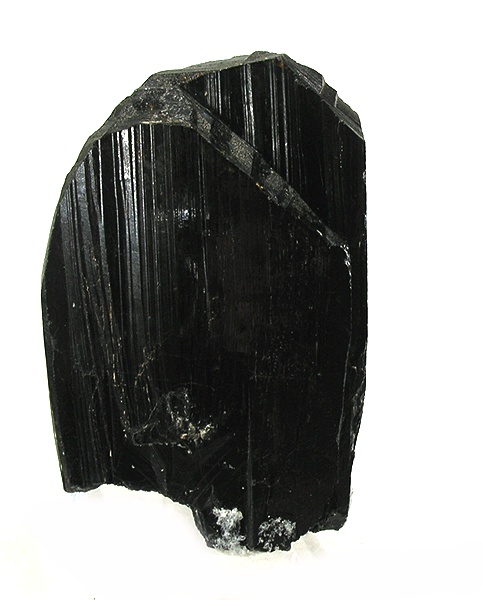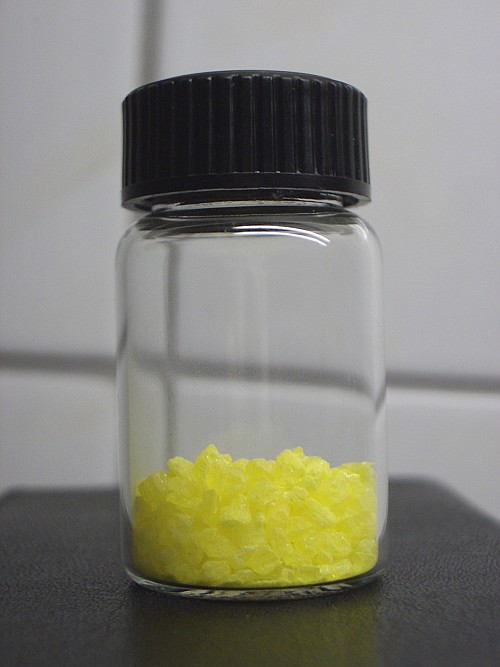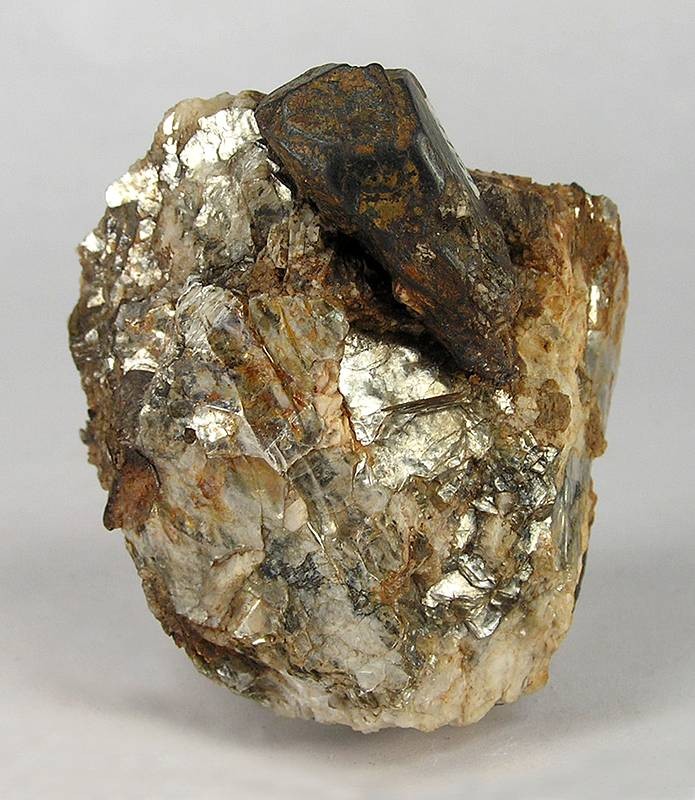|
1801 In Science
The year 1801 in science and technology involved some significant events, listed below. Astronomy * January 1 – Italian astronomer Giuseppe Piazzi makes the first discovery of an asteroid, Ceres, which is briefly considered to be the eighth planet. * July 11 – French astronomer Jean-Louis Pons makes the first of his 37 comet discoveries. * Jérôme Lalande and his staff at the Paris Observatory publish the astrometric star catalogue ''Histoire céleste française''. Biology * Jean-Baptiste Lamarck publishes ''Système des animaux sans vertèbres'' in Paris, a major work on the classification of the group of animals he is the first to describe as invertebrates. He is also first to separate the classes of arachnids and crustaceans from insects. * André Michaux publishes ''Histoire des chênes de l'Amerique septentrionale'' ("History of the oaks of North America"). Chemistry * November 26 – Charles Hatchett announces to the Royal Society his discovery of the chemical el ... [...More Info...] [...Related Items...] OR: [Wikipedia] [Google] [Baidu] |
Histoire Céleste Française
''Histoire céleste française'' (''French Celestial History'') is an astrometric star catalogue published in 1801 by the French astronomer Jérôme Lalande and his staff at the Paris Observatory. This star catalog consists of the locations and apparent magnitudes of 47,390 stars, up to magnitude 9. Stars are identified by common name, Bayer designation or Flamsteed designation, when available. It also contains observations of other astronomical phenomena. It was the largest and most complete star catalog of its day. This publication is a collection of several books of astronomical recordings taken over the previous decade at the observatory. A significant rewriting of this popular catalog was published by Francis Baily in 1847. It is from this catalog that the star reference numbers were assigned that continue in use to this day, such as for '' Lalande 21185''. Modern star catalogs, such as SIMBAD SIMBAD (the Set of Identifications, Measurements and Bibliography for Astr ... [...More Info...] [...Related Items...] OR: [Wikipedia] [Google] [Baidu] |
Columbite
Columbite, also called niobite, niobite-tantalite and columbate, with a general chemical formula of , is a black mineral group that is an ore of niobium. It has a submetallic luster, a high density, and is a niobate of iron and manganese. Niobite has many applications in aerospace, construction and the medical industry. Dating columbite minerals is primarily completed by uranium lead (U-Pb) dating, a slow process. Columbite has the same composition and crystal symmetry (orthorhombic) as tantalite. In fact, the two are often grouped together as a semi-singular mineral series called columbite-tantalite or coltan in many mineral guides. However, tantalite has a much greater specific gravity than columbite, more than 8.0 compared to columbite's 5.2. The formation of columbite depends on the concentrations of metals present that affect the crystalline structure of the mineral and the environmental impact. Columbite is a polymorph of tapiolite; they have the same chemical composit ... [...More Info...] [...Related Items...] OR: [Wikipedia] [Google] [Baidu] |
Columbium
Niobium is a chemical element; it has symbol Nb (formerly columbium, Cb) and atomic number 41. It is a light grey, crystalline, and ductile transition metal. Pure niobium has a Mohs hardness rating similar to pure titanium, and it has similar ductility to iron. Niobium oxidizes in Earth's atmosphere very slowly, hence its application in jewelry as a hypoallergenic alternative to nickel. Niobium is often found in the minerals pyrochlore and columbite. Its name comes from Greek mythology: Niobe, daughter of Tantalus, the namesake of tantalum. The name reflects the great similarity between the two elements in their physical and chemical properties, which makes them difficult to distinguish. English chemist Charles Hatchett reported a new element similar to tantalum in 1801 and named it columbium. In 1809, English chemist William Hyde Wollaston wrongly concluded that tantalum and columbium were identical. German chemist Heinrich Rose determined in 1846 that tantalum ores con ... [...More Info...] [...Related Items...] OR: [Wikipedia] [Google] [Baidu] |
Niobium
Niobium is a chemical element; it has chemical symbol, symbol Nb (formerly columbium, Cb) and atomic number 41. It is a light grey, crystalline, and Ductility, ductile transition metal. Pure niobium has a Mohs scale of mineral hardness, Mohs hardness rating similar to pure titanium, and it has similar ductility to iron. Niobium oxidizes in Earth's atmosphere very slowly, hence its application in jewelry as a hypoallergenic alternative to nickel. Niobium is often found in the minerals pyrochlore and columbite. Its name comes from Greek mythology: Niobe, daughter of Tantalus, the namesake of tantalum. The name reflects the great similarity between the two elements in their physical and chemical properties, which makes them difficult to distinguish. English chemist Charles Hatchett reported a new element similar to tantalum in 1801 and named it columbium. In 1809, English chemist William Hyde Wollaston wrongly concluded that tantalum and columbium were identical. German chemist He ... [...More Info...] [...Related Items...] OR: [Wikipedia] [Google] [Baidu] |
Royal Society
The Royal Society, formally The Royal Society of London for Improving Natural Knowledge, is a learned society and the United Kingdom's national academy of sciences. The society fulfils a number of roles: promoting science and its benefits, recognising excellence in science, supporting outstanding science, providing scientific advice for policy, education and public engagement and fostering international and global co-operation. Founded on 28 November 1660, it was granted a royal charter by Charles II of England, King Charles II and is the oldest continuously existing scientific academy in the world. The society is governed by its Council, which is chaired by the society's president, according to a set of statutes and standing orders. The members of Council and the president are elected from and by its Fellows, the basic members of the society, who are themselves elected by existing Fellows. , there are about 1,700 fellows, allowed to use the postnominal title FRS (Fellow ... [...More Info...] [...Related Items...] OR: [Wikipedia] [Google] [Baidu] |
Charles Hatchett
Charles Hatchett Fellow of the Royal Society, FRS FRSE (2 January 1765 – 10 March 1847) was an English mineralogist and analytical chemist who discovered the element niobium, for which he proposed the name "columbium". Hatchett was elected a Fellow of the Linnaean Society in 1795, and of the Royal Society in 1797. Hatchett was elected to the The Club (dining club), Literary Club in London in 1809 and became its treasurer in 1829. Life Charles Hatchett was born in Long Acre, London to John Hatchett (1729–1806), and Elizabeth Hatchett. John Hatchett was "(one of) the coachbuilders of London of the greatest celebrity". He later became a magistrate in Hammersmith. Charles Hatchett attended a private school, Fountayne's, in Marylebone Park, and was a self-taught mineralogist and analytical chemist. On 24 March 1786, Charles Hatchett married Elizabeth Martha Collick (1756–1837) at St Martin-in-the-Fields. Their children included: #John Charles Hatchett (bapt 27 January 1788 St ... [...More Info...] [...Related Items...] OR: [Wikipedia] [Google] [Baidu] |
North America
North America is a continent in the Northern Hemisphere, Northern and Western Hemisphere, Western hemispheres. North America is bordered to the north by the Arctic Ocean, to the east by the Atlantic Ocean, to the southeast by South America and the Caribbean Sea, and to the south and west by the Pacific Ocean. The region includes Middle America (Americas), Middle America (comprising the Caribbean, Central America, and Mexico) and Northern America. North America covers an area of about , representing approximately 16.5% of Earth's land area and 4.8% of its total surface area. It is the third-largest continent by size after Asia and Africa, and the list of continents and continental subregions by population, fourth-largest continent by population after Asia, Africa, and Europe. , North America's population was estimated as over 592 million people in list of sovereign states and dependent territories in North America, 23 independent states, or about 7.5% of the world's popula ... [...More Info...] [...Related Items...] OR: [Wikipedia] [Google] [Baidu] |
André Michaux
André Michaux (' → ahn- mee-; sometimes Anglicisation, anglicised as Andrew Michaud; 8 March 174611 October 1802) was a French botanist and explorer. He is most noted for his study of North American flora. In addition Michaux collected specimens in England, Spain, France, and even Persia. His work was part of a larger European effort to gather knowledge about the natural world. Michaux's contributions include ''Histoire des chênes de l'Amérique'' (1801; "The Oaks of North America") and ''Flora Boreali-Americana'' (1803; "The Flora of North America") which continued to be botanical references well into the 19th century. His son, François André Michaux, also became an authoritative botanist. Biography Michaux was born in Satory, part of Versailles (city), Versailles, Yvelines, where his father managed farmland on the king's estate. Michaux was trained in the agricultural sciences in anticipation of his one-day assuming his father's duties, and received a basic classical 18 ... [...More Info...] [...Related Items...] OR: [Wikipedia] [Google] [Baidu] |
Insect
Insects (from Latin ') are Hexapoda, hexapod invertebrates of the class (biology), class Insecta. They are the largest group within the arthropod phylum. Insects have a chitinous exoskeleton, a three-part body (Insect morphology#Head, head, Thorax (insect anatomy), thorax and abdomen (insect anatomy), abdomen), three pairs of jointed Arthropod leg, legs, compound eyes, and a pair of antenna (biology), antennae. Insects are the most diverse group of animals, with more than a million described species; they represent more than half of all animal species. The insect nervous system consists of a insect brain, brain and a ventral nerve cord. Most insects reproduce Oviparous, by laying eggs. Insects Respiratory system of insects, breathe air through a system of Spiracle (arthropods), paired openings along their sides, connected to Trachea#Invertebrates, small tubes that take air directly to the tissues. The blood therefore does not carry oxygen; it is only partly contained in ves ... [...More Info...] [...Related Items...] OR: [Wikipedia] [Google] [Baidu] |
Crustacean
Crustaceans (from Latin meaning: "those with shells" or "crusted ones") are invertebrate animals that constitute one group of arthropods that are traditionally a part of the subphylum Crustacea (), a large, diverse group of mainly aquatic arthropods including decapods (shrimps, prawns, crabs, lobsters and crayfish), seed shrimp, branchiopods, fish lice, krill, remipedes, isopods, barnacles, copepods, opossum shrimps, amphipods and mantis shrimp. The crustacean group can be treated as a subphylum under the clade Mandibulata. It is now well accepted that the hexapods (insects and entognathans) emerged deep in the Crustacean group, with the completed pan-group referred to as Pancrustacea. The three classes Cephalocarida, Branchiopoda and Remipedia are more closely related to the hexapods than they are to any of the other crustaceans ( oligostracans and multicrustaceans). The 67,000 described species range in size from '' Stygotantulus stocki'' at , to the Japanese ... [...More Info...] [...Related Items...] OR: [Wikipedia] [Google] [Baidu] |
Arachnid
Arachnids are arthropods in the Class (biology), class Arachnida () of the subphylum Chelicerata. Arachnida includes, among others, spiders, scorpions, ticks, mites, pseudoscorpions, opiliones, harvestmen, Solifugae, camel spiders, Amblypygi, whip spiders and Uropygi, vinegaroons. Adult arachnids have eight Arthropod leg, legs attached to the cephalothorax. In some species the frontmost pair of legs has converted to a sensory function, while in others, different appendages can grow large enough to take on the appearance of extra pairs of legs. Almost all Extant taxon, extant arachnids are terrestrial animal, terrestrial, living mainly on land. However, some inhabit freshwater environments and, with the exception of the pelagic zone, marine environments as well. They comprise over 110,000 named species, of which 51,000 are species of spiders. The term is derived from the Ancient Greek, Greek word (''aráchnē'', 'spider'), from the myth of the hubristic human weaver Arachne, w ... [...More Info...] [...Related Items...] OR: [Wikipedia] [Google] [Baidu] |








